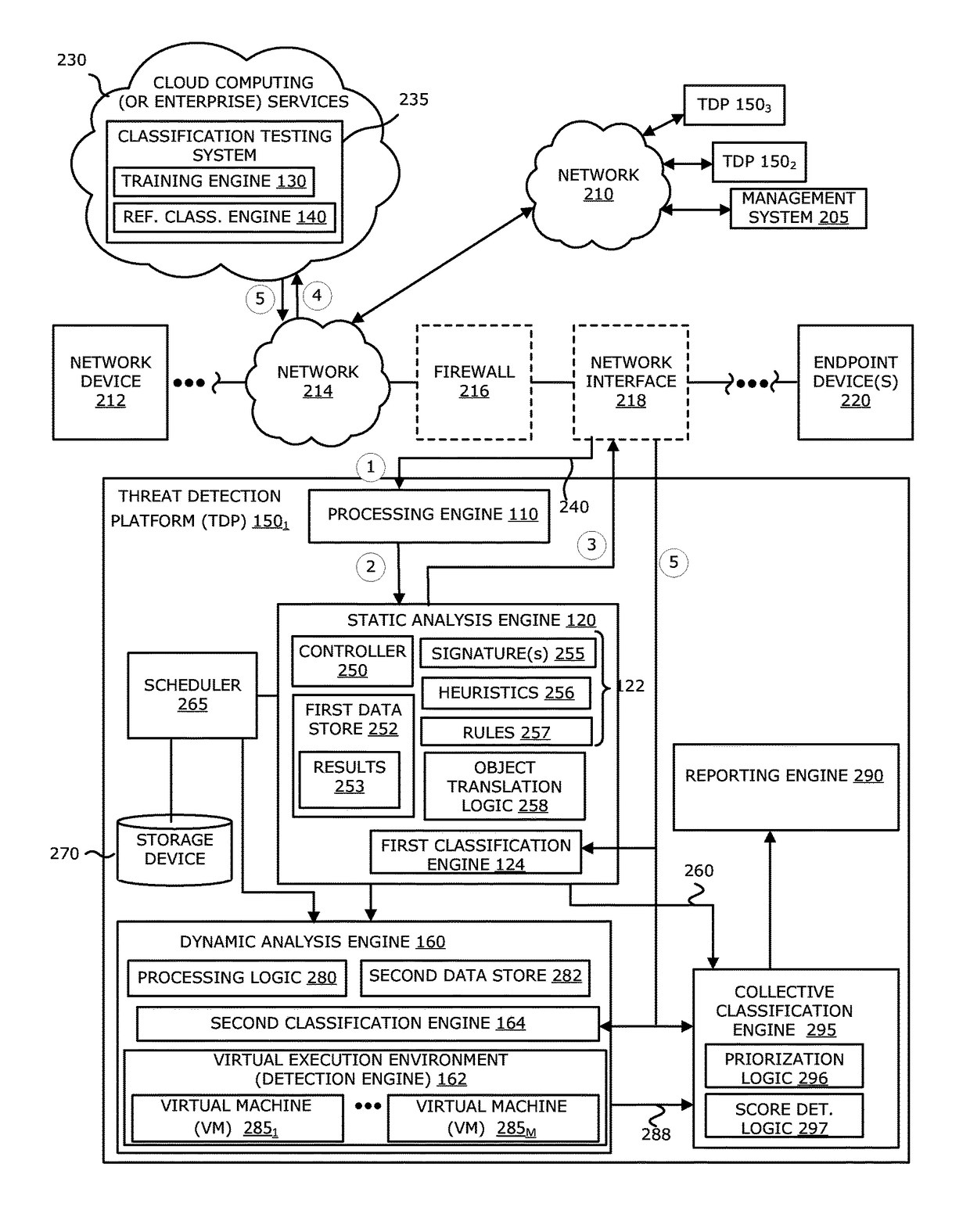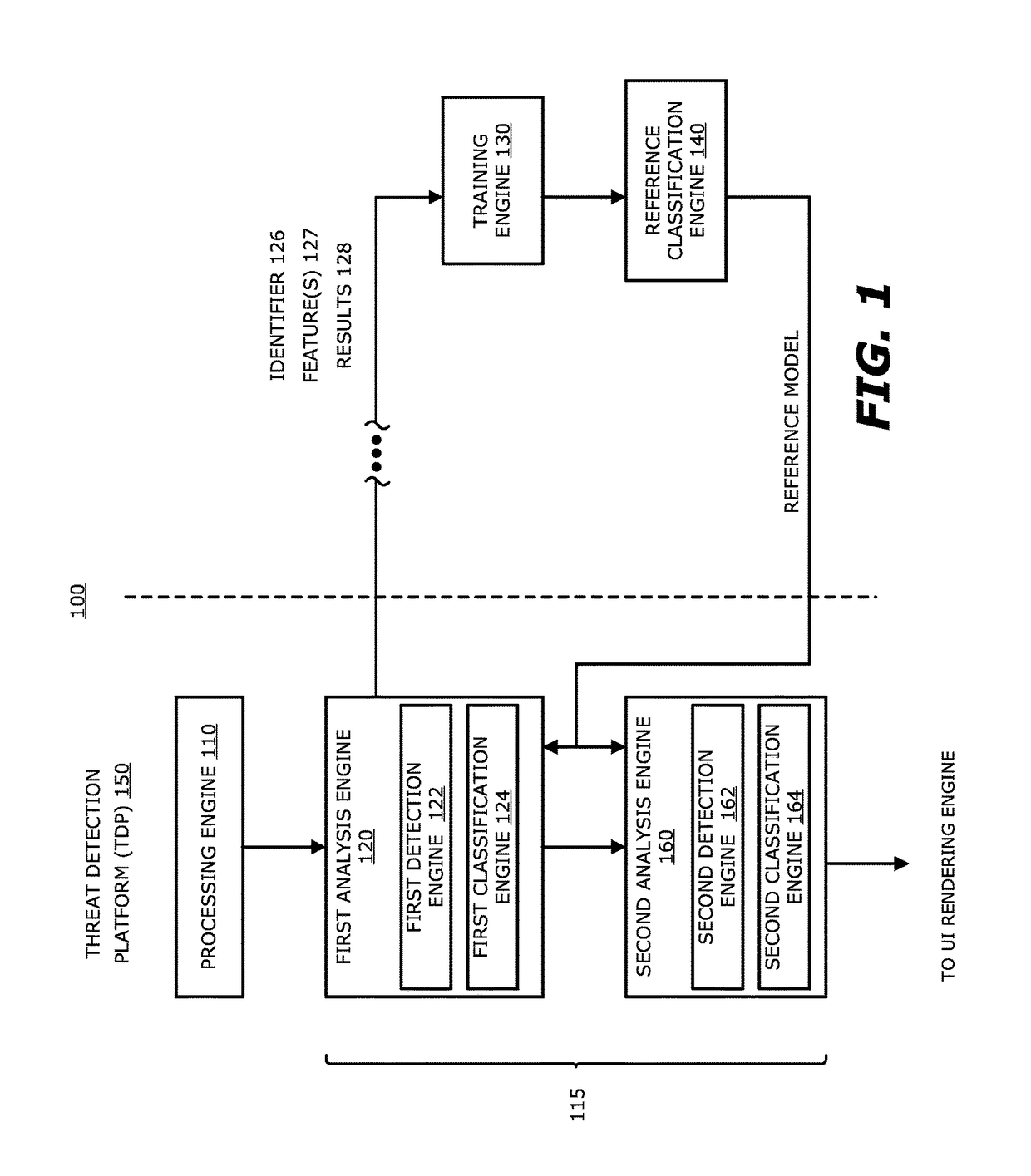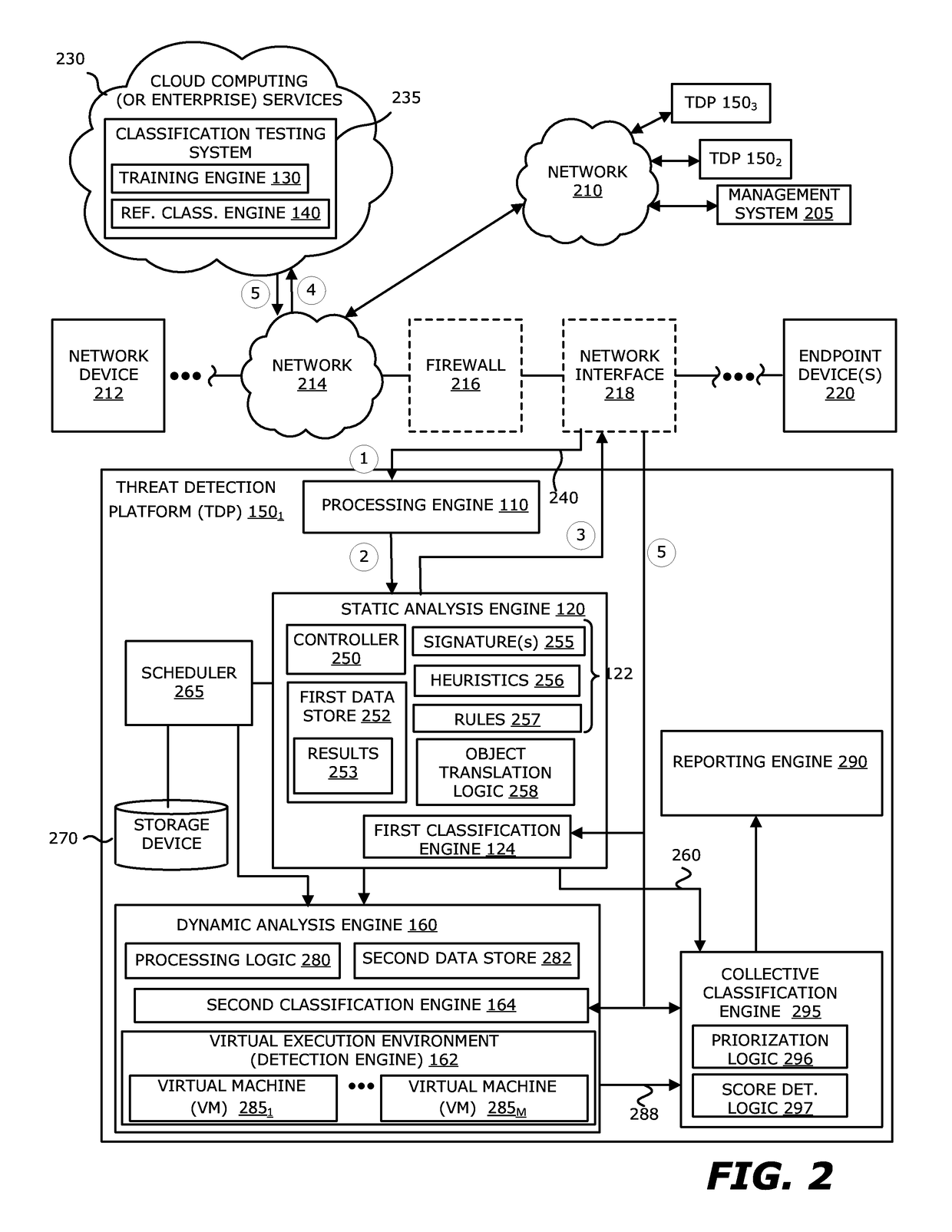Framework for classifying an object as malicious with machine learning for deploying updated predictive models
a machine learning and object technology, applied in the field of cyber security, can solve the problems of malicious attacks that access the internet or other publicly accessible networks, malicious attacks may involve malicious software, and other malicious attacks may be more complex
- Summary
- Abstract
- Description
- Claims
- Application Information
AI Technical Summary
Benefits of technology
Problems solved by technology
Method used
Image
Examples
second embodiment
VIII. Second Embodiment for a Classification Engine Update Scheme
[0089]More specifically, according to another illustrative embodiment, malware may be discovered through a two-stage process in the threat detection platform 150, including the static analysis engine 120 and the dynamic analysis engine 160. Herein, the static analysis engine 120, upon determining that a suspect object is suspicious (e.g., exceeds a certain likelihood that the object is malicious), submits the suspect object for behavior analysis by processing this object in a run-time (virtual) environment. After behavioral analysis, the object may be classified as malicious or non-malicious.
[0090]If the initial static analysis determines that an object is not malicious, the object may be further analyzed through a secondary static analysis operable after the behavioral analysis, which extracts and analyzes relevant features of the object. The relevant features include those that may have been obfuscated during the ini...
PUM
 Login to View More
Login to View More Abstract
Description
Claims
Application Information
 Login to View More
Login to View More - R&D
- Intellectual Property
- Life Sciences
- Materials
- Tech Scout
- Unparalleled Data Quality
- Higher Quality Content
- 60% Fewer Hallucinations
Browse by: Latest US Patents, China's latest patents, Technical Efficacy Thesaurus, Application Domain, Technology Topic, Popular Technical Reports.
© 2025 PatSnap. All rights reserved.Legal|Privacy policy|Modern Slavery Act Transparency Statement|Sitemap|About US| Contact US: help@patsnap.com



